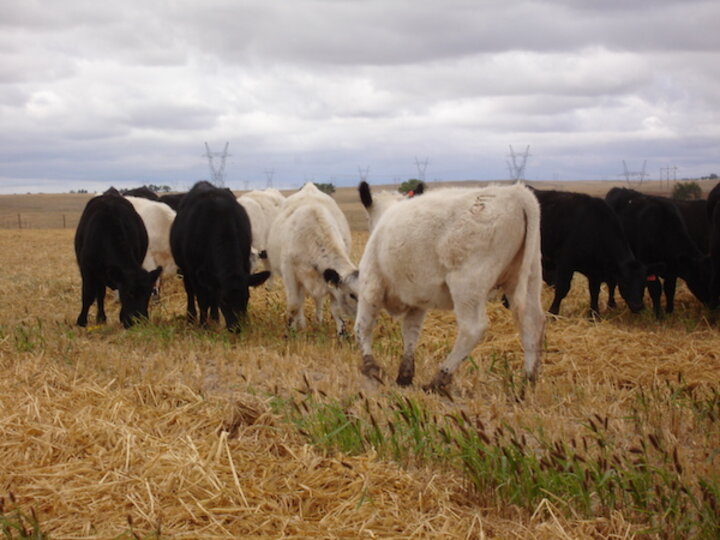Could you recommend forage I could use for fall grazing and also harvest a hay crop off? Also could I plant wheat/rye into the forage stubble in November for spring grazing? I really need the extra grazing from September 1 to November 10th and April 20th to June 1st. If I could get away with not dealing with prussic acid poisoning, it would be a plus.
A. There are several annual and perennial forages that can help fill your spring and fall grazing season extensions as well as provide hay potential. Be aware, though, that no single option is likely to meet all your desires and that moisture will be a major factor influencing productivity.
Among annuals, cereal rye and triticale have great potential. The amount of fall grazing will be somewhat limited although early planting (early August) and selection of varieties with more fall growth can help. Rye tends to be a bit more reliable due to greater winter hardiness. It also will be available for very early spring grazing, starting early April many years. By mid-May it often starts losing palatability rapidly as plants try to form seed stalks. Triticale will be ready for spring grazing 2 to 3 weeks later than rye in spring but will continue to provide good forage several weeks later into late spring than rye. If grazed lightly or not at all in spring, both rye and triticale can produce very high, single cutting hay yields.
Because of its early development and declining palatability, rye should be cut quite early – early heading at latest. Any later and you may need to grind hay to get good consumption. This may occur by mid-May. Triticale will retain feed value and palatability better at later stages of maturity and naturally is later in development. Cutting by early milk stage might happen in early to mid-June.
Other annual grasses to fit various niches include oats and pearl millet. Millet could be your best choice if grazing is needed as early as early September. It can be planted in mid-summer and be ready to graze, weather permitting, within 5 to 6 weeks. It will stop growing as soon as cool temperatures develop, though, so duration of fall grazing will depend on how much growth accumulates by about mid-September and your stocking rate. Oats can be planted in early August like rye and triticale but will grow faster than these winter cereals. You should wait at least 6 weeks before starting to graze if higher yields/carrying capacity are needed. Both oats and millet will be killed by winter temperatures. Spring planted oats (as early as possible, such as mid-March), rarely provides much grazing until mid-May.
Another unconventional grass alternative for late summer/fall grazing is corn. I'd suggest trying 'binrun' corn that you first have tested for germination and then drill at very high seeding rates (one-half to one bushel per acre). This is very inexpensive seed. Be sure your drill will pass kernels through without much breakage. Corn can be planted anytime from normal corn planting in spring until early July for use beginning in early September. Earlier planting means more feed.
Among annuals, finally, don't overlook brassicas like turnips and forage rape. They may not be well suited for the early fall grazing time since planting should occur in early August. However, if you let them grow without grazing until early November you can have surprisingly good grazing for several months during winter, even with modest snow cover up to about a foot of snow. Don't expect to cut hay, however.
Perennial cool-season grasses, such as pubescent and intermediate wheatgrass, should provide good spring grazing or hay. Fall growth is highly dependent on moisture but can be moderate.
None of the forages mentioned above contain risk of prussic acid poisoning.

